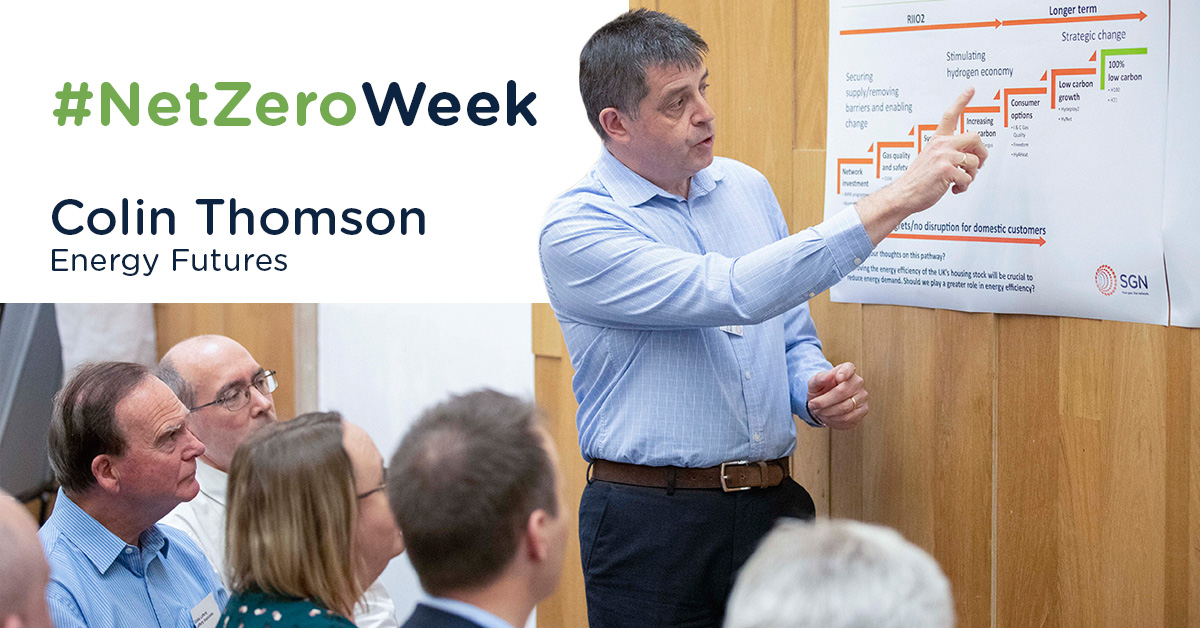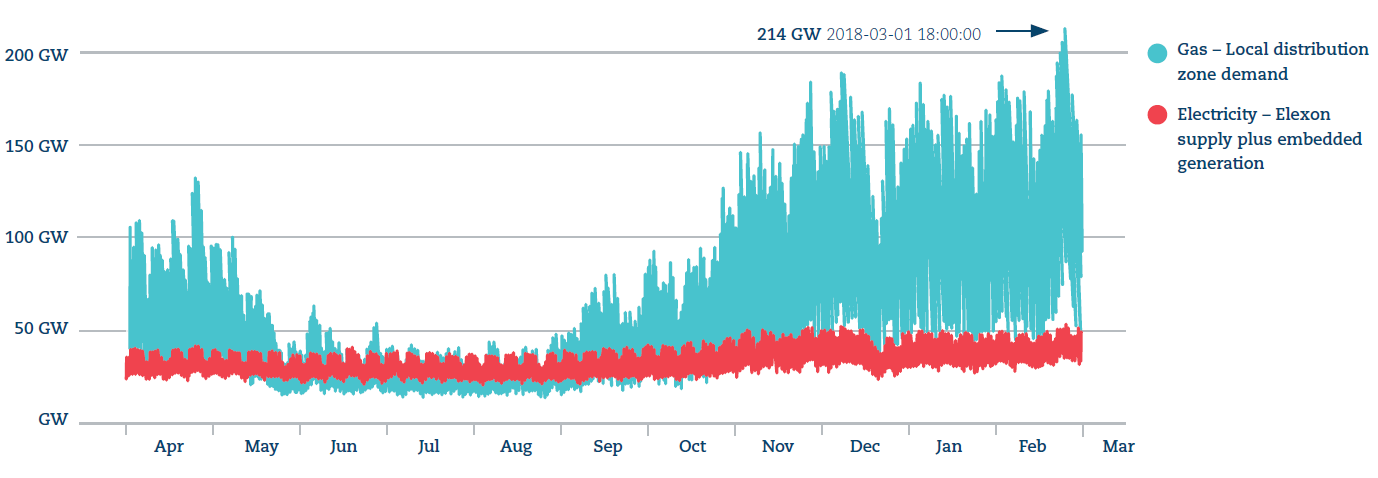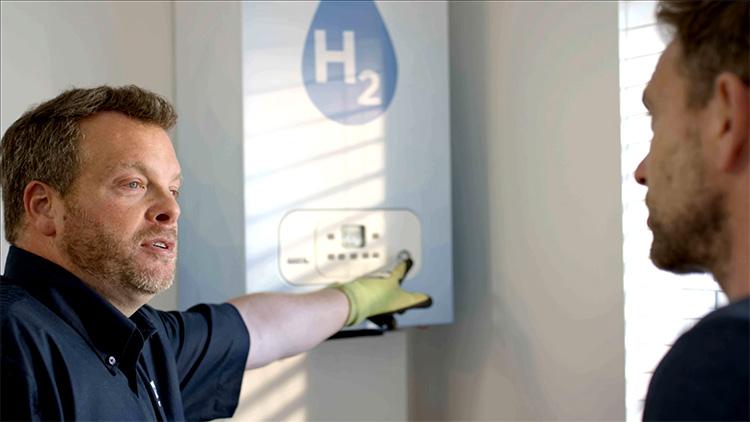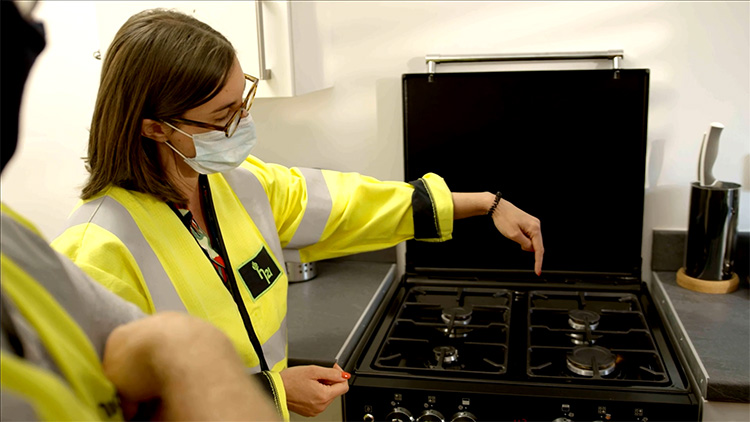
Colin Thomson, from our Energy Futures team
Our customers tell us they want stable progress to net zero while continuing to receive the benefits they currently get from their energy. This means we need decarbonisation options which give us the security and resilience we have now, if not better.
The Climate Change Committee (CCC) and UK and Scottish Governments agree this can only be achieved by a mix of complementary decarbonised gas and electrification options. While an increase in electrification will be needed, it creates system-wide challenges. Taking 2018’s Beast from the East as an example. During that period demand for gas, delivered by the gas distribution networks, peaked at around 214GW, compared with 52GW from electricity at the same time.
It’s clear one fuel source won’t be enough to get us to net zero. We’re going to need a more flexible and resilient energy system that works on a whole system basis all year round.

A graph showing GB’s gas and electricity demand in 2018 including during the Beast from the East - With kind permission from UKERC
Low carbon gas
Gas networks already deliver energy to nearly 23 million premises including homes, businesses and industry. Continuing to use the gas network means replacing natural gas with low and zero carbon green gas sources like biomethane and hydrogen. This strategy comes with important advantages:
- A low carbon gas network integrated with the electricity network would be resilient and flexible helping us to meet varying energy demand throughout the year.
- Large parts of the gas distribution network have already transitioned to polythene pipes which can safely transport hydrogen.
- For domestic and commercial heating, hydrogen offers a more direct low-disruption replacement for natural gas than the alternatives.
- Research tells us customers want to keep a gas connection and changing the gas supplied feels a natural way forward. They also want to be able to continue to turn their heating up as and when they need it and don’t want to move to a system where they won’t have control over this.
How do we convert customers to hydrogen?
Gas boilers and appliances will need to be converted to their hydrogen equivalents. They take up the same amount of space as they do currently and work in the same way. They have also already been tested to the same high safety standards.


Importantly for customers, most of the existing heating system inside homes, including radiators and pipework, doesn’t need to be changed making hydrogen gas the least disruptive option for decarbonising heating. Moving domestic customers from natural gas to 100% hydrogen will take, on average, one day per customer.
We need to move on from the debate of which technology will “win” to understanding what customers want and really figuring out how we deploy zero carbon solutions to British homes and businesses at pace. The scale of the engineering and logistical challenge to decarbonise heat is huge. So, we need to keep all our options on the table as we work through the transition.
How are we preparing for hydrogen?
A series of projects and pilots are underway to providing policymakers with the evidence they need on costs, safety and feasibility to accelerate and roll out hydrogen for homes in the next decade. Here are some of ours:
H100 Fife
Our world-first project on the east coast of Scotland in Levenmouth where around 300 homes will be connected to the world’s first hydrogen gas network in 2023.
LTS Futures
We’re investigating the potential of repurposing our local transmission system – the larger gas mains delivering gas between towns and cities – to transport hydrogen.
Scotland’s accelerated pathway for 100% hydrogen
We’ve published a report outlining the practical steps needed to rapidly decarbonise a significant part of Scotland’s homes and industry. It demonstrates how hydrogen can play a leading role in delivering the Scottish Government’s target of one million homes with low carbon heat by 2030.
Partnership with RWE
Supplying Scottish towns and rural communities with sustainable hydrogen gas is the focus of this partnership between ourselves and renewables generator RWE.

